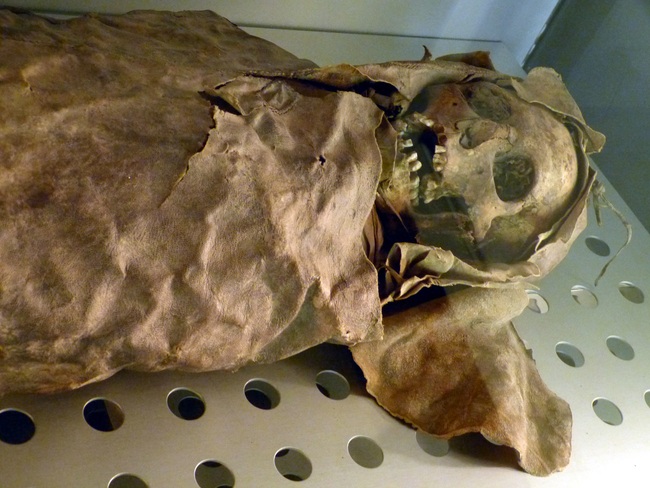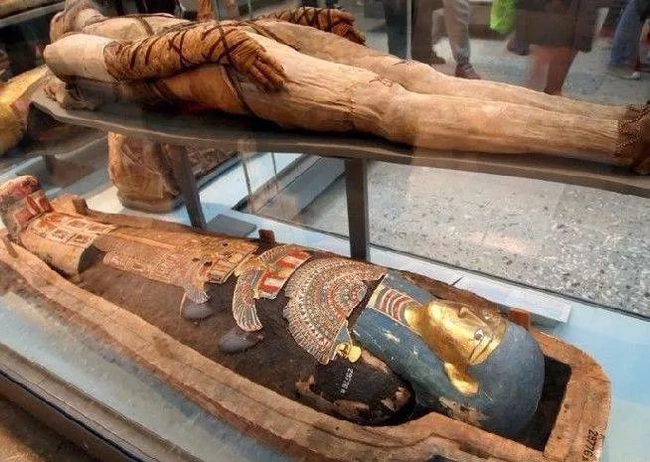Although there are many mysteries surrounding the mummification process, this is still considered an ancient Egyptian medical achievement.
The ancient Egyptians believed that a part of the human soul will forever be attached to the body. Therefore, to protect the souls in the afterlife, they must keep their bodies from decomposing. So how to create a mummy that remains intact for thousands of years?
In the early days, mummies created by the ancient Egyptians did not last too long. Because the original embalming method was very simple, they just wrapped the body with a cloth. But doing just that will cause the mummy to quickly rot. It wasn’t until much later that the ancient Egyptians “invented” a mummification technique that produced all the “perfect” mummies we have found today.
According to Herodotos ( a Greek historian who lived in the 5th century BC and is considered the “father of history” in Western culture ), it takes at least 70 – 100 days to create a Mummies.

It takes up to 70 days to complete a mummy.
First, after a person dies, the body will be taken to a small room specializing in embalming. Here, the dead body was placed on a table about half a meter high, surrounded by many strange tools. When everything is ready, they will first use a special metal hook, close it to the skull from the nostril and gently stir until the brain marrow flows along the nose out.
After removing all the brain fluid, they poured alcohol inside, also from the nasal passages, to clean and disinfect.
As we know, when a person dies there are still many digestive enzymes and bacteria in the internal organs. If left behind, the entire body can quickly be “swallowed” from the inside. To avoid this situation, in the second step of the mummification process, the ancient Egyptians would make an incision in the left abdomen of the dead person, in turn removing the entire liver, intestines, stomach, lungs and other organs. other organs.
The heart is the only organ retained in the body. Because the Egyptians believed that the heart contains a person’s consciousness and personality and will be “judged” after death, so it must be kept. But according to statistics, only about 25% of mummies still keep their hearts inside. Therefore, many people speculate that mummies with hearts may be people of high status when alive. There are also people who believe that if the heart is no longer there, the person will not be able to be revived.
Unlike the brain that is thrown away, the organs when removed are cleaned with salt and soaked with cooking oil or liquid turpentine. Next, store it in a container shaped like a jar, called a canopic jar.

Canopic jars are vessels used to store and preserve the organs of the dead in ancient Egyptian funeral rituals.
The 4 vases represent the 4 sons of the eagle-headed god Horus, respectively:
– The human-headed god Imset is responsible for protecting the liver
– The wolf-headed god Duamutef is responsible for protecting the stomach
– The baboon god Hapi is responsible for protecting the lungs
– The bird-headed god Qebehsenuef is responsible for protecting the intestines
The next step is to clean the hollow body inside with coconut wine and spices, then use some materials to temporarily “wrap” the corpse. Different parts will use different materials and methods, such as with a hollow skull, people will use tree sap poured in through the nose. A short time later, the embalmers will use Nile River water to “bathe” the body for the last time. This is a step with religious significance. After “bathing”, the body moves to the step of removing moisture.
The simplest way is to use dry Natron (a type of rock salt) to cover the inside and outside of the body. Dry Natron is the main component of natural Natron mines, and can be colorless, white, gray or yellow due to impurities. It is often used to make soda, caustic soda,… widely used in industry and home today.
In ancient times, Natron was an important material to keep mummies intact over time. Not only does it kill bacteria and parasites, it can also remove water from body tissues, preventing the decomposition of corpses.
For a while, modern people thought the ancient Egyptians diluted dry Natron and placed it inside mummies. It was not until the 20th century that researchers discovered that this was not the case. Dry Natron was covered inside and outside the corpse and was renewed every day. However, there are some mummies that have been immersed directly in Natron solution. But this method is very complicated because the corpse must be carefully handled and the incision in the left abdomen must be sutured. Compared with dry Natron, Natron solution can preserve mummies better.
After about a month, people will place cinnamon bark, pine resin, etc. to fill the corpse’s abdominal cavity. Next, use a needle and thread to close the abdominal incision.
In the next step, the ancient Egyptians would apply a layer of tree resin to the entire body, then use their hands to rub the wax oil mixture on top.
The most important step is to wrap the body with linen, they will wrap the head first, then the entire body of the body. After many layers of linen, they finally wrapped the mummy in a large sheet of cloth. The mummy looks quite tall because it is wrapped in many layers of linen around its body, but in reality ancient Egyptians were usually not tall.
To prevent the face from decomposing and deforming, they used resin to apply to the face. Then use cow’s milk, wine, beeswax, spices, resin, asphalt,… to color and “make up” the mummy. But this is difficult to restore the original appearance of the dead person. With deeply sunken eye sockets, they would stuff them with stones. During the time of King Ramesses III, the ancient Egyptians created eyeballs out of porcelain instead of stone as before.

During the reign of King Ramesses III, the ancient Egyptians created porcelain eyeballs.
The final step is to put on a wig, clothes, jewelry and a little perfume. During the whole process, the ancient Egyptians had to chant spells continuously, lasting until the 52nd day. The 68th – 70th day was the time of burial, placing the mummy in the prepared coffin.
The embalming room always has a large number of bodies that need to be processed. And the “embalmers” are so busy that they inevitably embalm other things like cockroaches, bugs, etc. Sometimes, they even get the name tags of the mummies wrong.

The 68th – 70th day is the time of entering the coffin, placing the mummy and the prepared coffin.
Although the mummy still has many mysteries, it is still considered an ancient Egyptian medical achievement. During the mummification process, they accumulated a lot of anatomical knowledge, and also initially understood the relationship between the blood circulatory system and heart function.
The ancient Egyptians not only mummified humans but also applied this technique to animals. For them, animals are the embodiment of gods and millions of mummified cats, birds, etc. have been created. Previously, scientists thought that animal mummies were only in rough form, but a recent study shows that the ancient Egyptians’ animal mummification techniques were as “skilled” as preserving mummies in People.





